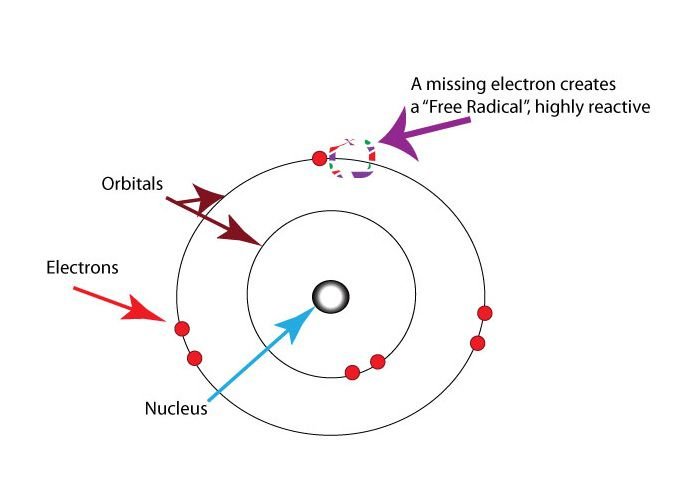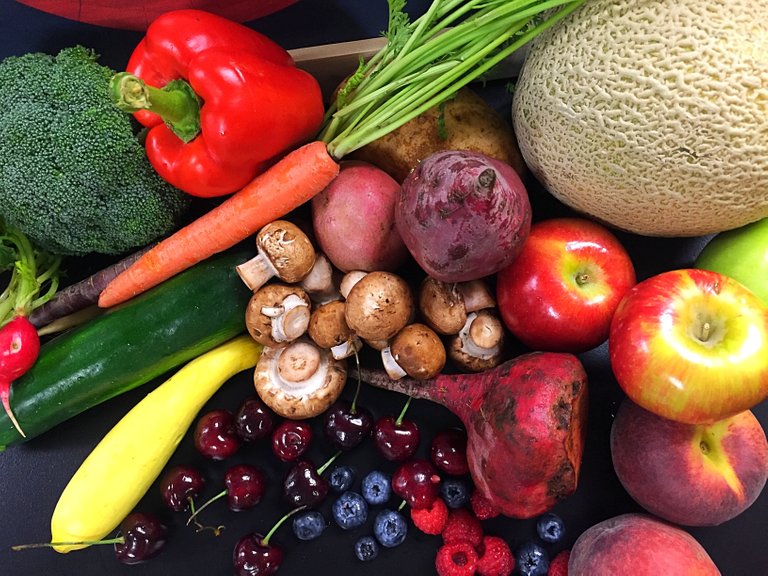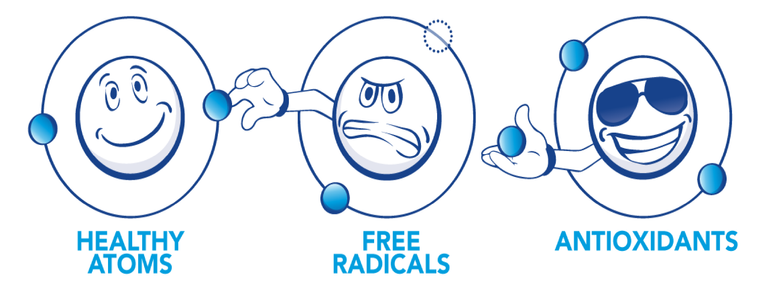THE THREAT FROM WITHIN THAT IS UNDERMINING YOUR HEALTH
– and what you can do about it
Your body is an amazing creation. It has built in mechanisms to cope with all the stresses it faces on a day-to-day basis and has the ability to repair damage caused by these. We call this its ‘adaptive reserve’. Generally, we start life with plenty of adaptive reserve, but as time goes on this gets depleted through environmental factors, poor diet and lifestyle choices, and illness. This is why at 20 years of age you can party all night and then go to work the next day without feeling too bad, while at 40 it’s a wholly different experience! An analogy would be to compare this to money in your bank account. You can do many things in life to undermine your health, wittingly or, more likely, unwittingly, and it is not too critical in the short term. However, just like with your bank account, if you keep spending and not replenishing, then your health reserves deplete (you owe the bank) and poor health issues slowly commence – you go from being in the black to being in the red. Free radicals can be one of these factors that tip your scales of health into the red. Red is also a good colour to use since free radicals generate… i-n-f-l-a-m-m-a-t-i-o-n ! Ouch!!
What are Free Radicals?
No, these are not free thinking individuals trying to disrupt the status quo in society, but they are atoms or molecules which can disrupt the status quo within your body.
Normal metabolic processes in the body, such as breaking food down to make fuel, and the burning of that fuel, can create unstable and highly-reactive atoms, or groups of atoms, that have an unpaired electron – they are missing an electron. These unpaired electrons become chemically reactive and have to steal an electron from neighbouring molecules in our healthy cells to satisfy their need. Typical targets of this theft are our cell membranes, our DNA, lipids, enzymes and proteins in our cells, and any of the tiny functioning ‘organelles’ working within our cells. By stealing an electron, the free radicals create further free radicals and so a cascade of inflammatory conditions commences within our body – a domino effect, if you like.

It is worth mentioning that not all free radicals are bad, since the immune system will actually create and harness them to attack viruses and bacteria that would otherwise make us sick.
Other generators of free radicals are X-rays, radiation through ozone holes in the sky, cigarette smoke, air pollutants, pesticides in our food and water, chemicals like BPA in plastics, specific spectrums of light, as well as many other environmental factors. We are constantly under attack.
The hidden dangers of exercise
Exercise is healthy isn’t it? Yes, of course, but…physical exercise involves burning our cellular fuel which is an ‘oxidative’ process (think of metal rusting, or an apple turning brown when exposed to air) that produces free radicals. This is called ‘oxidative stress’. Small amounts of oxidative stress is beneficial, even essential, to our health because as the body repairs itself it becomes stronger and more resistant to oxidative stress from the next workout. So regular moderate exercise strengthens your health. But when exercise is taken to extreme, and especially when we suffer injury, more free radicals may be triggered than our bodies can handle. Free radicals are the source of all inflammation and prompt many chronic conditions of ill health. This is why athletes need ‘rest days’ incorporating into their training programmes – a period when their bodies can counter the free radical production generated from energy expenditure, before any repair and growth of muscles can take place.

But isn’t this just part of normal life?
Yes, to a point, it is and we have an adaptive reserve, mentioned earlier, to deal with it. Free radicals are even a normal part of simply breathing. An estimated 5% of the oxygen consumed by us is converted to free radicals, because anaerobic energy production provides hydrogen ions that can react with an oxygen free radical to form Reactive Oxygen Species (ROS), such as hydrogen peroxide. These ROS have an important role in cell signalling and homeostasis. Millions of years of evolution have developed mechanisms for us to balance our free radical burden by producing antioxidants within the body or gained from our food. Antioxidants carry and donate a spare electron to free radicals and in doing so neutralise them from causing harm. Hence the reason you should eat a plentiful source of antioxidants, like your fresh fruits and greens as granny always told you to!

It’s all a matter of balance. The serious problems arise when the free radical attack exceeds our body’s capacity to keep them in healthy balance. This can be a gradual process, as with chronic illness, or, as in the case of ancient mariners who suffered from scurvy through the depletion of the antioxidant vitamin C, free radical damage can take on fatal consequences fairly quickly. Many viruses we catch work the same process of excessive free radical production.
( )
)
Inflammation, mitochondria, and the cause of chronic illness
As mentioned earlier, chronic illness tends to be based around inflammation at the cellular level and one network of structures, the mitochondria – organelles within the cells which have many roles beyond simple cellular energy (ATP) production – may also suffer damage from free radicals that transforms these multi-taskers from providing many highly beneficial roles to performing destructive ones. However, there are ways to prevent and reverse this, through diet and lifestyle choices.
.svg.png)
Another point to make is that, in simplified terms, eating a heavy calorific meal and sitting down to watch TV or going straight to bed, energises your mitochondria yet this sedentary time provides them with no work to burn this excess fuel. They can almost ‘fizz’ with excitement and commence free radial production, which may even be harmful to them. A further consequence is that nitric oxide binds in to the last of four enzyme phases within the mitochondria that make our cell fuel, ATP. If this occurs then communication proteins – sirtuins, that signal between the mitochondrial DNA (only derived from mother’s side) and the main nuclear DNA – fail to perform many signalling and communicating roles, including identifying damage and the repair of the main DNA. This is an entire topic I would like to cover another time but, just to say, if we have damaged DNA code, this leads to messy and conflicted metabolic processes that drive diseases outcomes and the ageing process. It’s all bound in with free radical overload and massive inflammatory damage.
So what can I do about free radicals?
We were only able to evolve from the natural influences of this planet, including sunlight on our skin, barefoot contact with the Earth’s magnetic field, drinking fresh clean water from the rivers and eating the whole natural foods that grew under the same circumstances. Food was often scarce and changed with what the seasons made available to us. Changing diet altered our biochemistry in seasonal ways too. Being short of food was normal and natural. We could thrive on it or at least adapt to cope with this state of hunger.

The accepted modern habit of eating three carbohydrate-rich meals a day was not part of this evolution and is not at all beneficial to our health. Our hunter gatherer cousins had to eat predominantly fats and proteins from hunted quarry, and sometimes they lived off a meagre amount of body fat gained from eating fruits and nuts during the late summer and autumn period. This process of laying down fat was a preservation mechanism that was stimulated by the long daylight length of summer days (part of our seasonal circadian rhythm) which stimulated our appetite hormone ghrelin, and our body’s fat hormone leptin. During this food-rich summer period, our biology set us up to scoff as much as we could to prepare us for winter, without our conscience knowledge. At other times of year we rarely ate – maybe not for days. This was, and is today, actually beneficial to mitochondrial function – they produced very few excess free radicals and so their performance was very high across the spectrum of their activity and inflammatory illness was minimal.
It is a little recognised fact that burning fats (ketones), as opposed to carbohydrates (sugars), produces higher levels of ATP, with much lower levels of free radical production and damage. Once you realise this, you can understand why eating less, ‘intermittent fasting’, as well as eating a ketogenic diet (low carb, high fat) plays a valuable part in restoring health in many instances. As this is too great a topic to go into here I will expand on this in future posts. Suffice to say that adopting these principles into your diet can greatly improve your health and resistance to free radical attack but I would only recommend doing so under the supervision of your doctor or a qualified nutritionist well-versed in these principles.
Further benefits of a more natural diet
There are very few top athletes, or their coaches, that have discovered that their endurance and explosive output could improve by adopting a ketogenic style of eating, while also reducing their likelihood of injury from excessive free radical production. I would love to know whether this is part of Roger Federer’s secret – at 36 he is still at the top of his game and has probably suffered less injury than many other tennis players! I would also like to know if he maintains his NAD+ levels (the so-called ‘Molecule of Youth’). This is a simple way to boost mitochondrial functions, their signalling and communication processes, as well as balancing free radical populations to healthy levels.

By John Togasaki - Flickr: Amazing Roger Federer, CC BY 2.0, https://commons.wikimedia.org/w/index.php?curid=17371576
If you have enjoyed this, my first post, then please let me know as I have some other less well known issues that cause us harm to write about.
Good health to you all,
Sam Metson
Nutritional Therapist, Advanced Supplements Adviser and Photobiomodulation Therapist
Email: sam@metson.net
Congratulations @mooringsman! You received a personal award!
Click here to view your Board
Do not miss the last post from @steemitboard:
Congratulations @mooringsman! You received a personal award!
You can view your badges on your Steem Board and compare to others on the Steem Ranking
Vote for @Steemitboard as a witness to get one more award and increased upvotes!